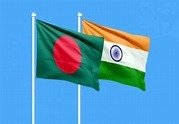Featuring Lieutenant General Ashoke Kumar Chatterjee, PVSM, VSM
In late 1971, India entered a defining chapter in its military history—the liberation of Bangladesh from Pakistani rule. At the heart of this dramatic campaign was impeccable planning from India’s Eastern Command, where Lieutenant General Ashoke Kumar Chatterjee served as GSO‑1 (Operations) at Fort William. He played a pivotal role in operational design, coordination with Mukti Bahini guerrillas, and, notably, in raising a brand-new corps—the II Corps—instrumental in the swift march to Dhaka.
1. Eastern Command & the Architecture of Victory
At Fort William in Calcutta, Eastern Command oversaw India’s offensive in East Pakistan. It mobilized existing IV and XXXIII Corps, reorganized the 101 Communication Zone into a division-strength combat unit, and, critically, created a new formation—II Corps. This fresh corps, raised under Lt Gen Chatterjee’s coordination, provided the force structure needed for multi-axis thrusts toward Dhaka by December 1971 Wikipedia+6Wikipedia+6Wikipedia+6.
2. The Strategic Timeline: Build-Up & Calculated Patience
Though Operation Searchlight began in March, top Indian military leadership—including General Manekshaw and DMO Maj. Gen. K.K. Singh—deemed India only capable of launching a full-scale campaign by winter, when Chinese threats in the north would be less pressing Quartz+2Wikipedia+2Rediff+2. Chatterjee’s Eastern Command anticipated this reality, initiating logistical buildup in Tripura and Meghalaya as early as May—constructing roads, airfields, and supply depots through the monsoon to support a future corps-level advance Rediff+1Quartz+1.
3. Integrating Mukti Bahini: Symbiosis of Forces
The Indian Army collaborated closely with Mukti Bahini—the Bangladeshi guerrilla force—ensuring a unified operational effort. Mukti Bahini was organized into eleven sectors and, by December, included around 30,000 regulars and over 100,000 guerrillas Quartz+3Wikipedia+3indianarrative.com+3. Plans had Mukti Bahini conducting sabotage, reconnaissance, and psychological disruption in the lead-up to the Indian offensive, reducing Pakistani capability inside Bangladesh and allowing Indian forces to strike more decisively Wikipediaindianarrative.com.
4. II Corps in Action: Forming the Camel Corps
Raised under Chatterjee’s oversight, II Corps—nicknamed the Camel Corps—was headquartered at Krishnanagar and led by Lt Gen T.N. Raina Wikipedia+4Wikipedia+4Wikipedia+4. It included formations such as the 9th Infantry Division and the 4th Mountain Division, supported by artillery, engineers, and the independent parachute brigade. II Corps spearheaded thrusts along axes like Darshana–Jessore–Khulna, designed to cut off Pakistani formations from the south and west before the final push toward Dhaka.
5. Achieving Strategic Surprise: Speed, Airborne & Amphibious Maneuvers
As operations were greenlit in December (after Pakistani pre-emptive air strikes), Indian military planners executed highly coordinated multi-pronged offensives. Intelligence, logistical readiness, and air–ground coordination allowed for “lightning campaigns” that shattered Pakistani defenses Wikipediaindianarrative.com+1reddit.com+1.
Notable operations included:
-
Airborne assault at Tangail (11 December): Indian paratroopers were dropped behind Pakistani lines, severing the Dhaka corridor and facilitating rapid link-up with ground forces htppijump4joy.wordpress.com.
-
Meghna River crossings by helicopter and boats: Unconventional methods enabled a vertical envelopment that left the Eastern Pakistani command in disarray telegraphindia.com+1indianarrative.com+1.
6. Final Collapse & The Surrender at Dhaka
With major port cities like Chittagong and Khulna already surrounded and blocked, Pakistani forces in the “Dhaka Bowl” had little manoeuvre space. On 16 December 1971, Lt. Gen. A.A.K. Niazi formally surrendered to Eastern Command under Lt Gen Aurora in what became the largest capitulation since World War II—about 93,000 troops taken prisoner, Wikipedia+2Wikipedia+2Rediff+2. Chatterjee personally accompanied Aurora during the surrender ceremonies, marking the culmination of months of planning and execution RediffRediff.
7. Legacy: Lessons in Strategic Planning & Operational Leadership
Lieutenant General Ashoke Kumar Chatterjee’s contributions illustrate critical themes:
-
Proactive logistics and infrastructure development months ahead of open conflict
-
Building new operational formations, such as II Corps, to seize opportunity
-
Deep integration with indigenous forces, enabling guerrilla-ground synergy
-
Mastery of multi-domain operations, including airborne drops, amphibious crossings, and inter-service coordination Rediff
Conclusion
Under Lt Gen Chatterjee’s operational stewardship at Fort William, Indian Eastern Command transformed from defensive readiness into decisive action. His role in raising the Camel Corps, knitting together intelligence, logistics, Mukti Bahini coordination, and cutting-edge tactics enabled a campaign that, in just 13 days, secured Bangladesh’s independence.
For historians, military strategists, or anyone fascinated by strategic leadership under pressure, Chatterjee’s planning provides a compelling case study in how meticulous preparation and decisive execution can turn geopolitical aims into historic victory.


